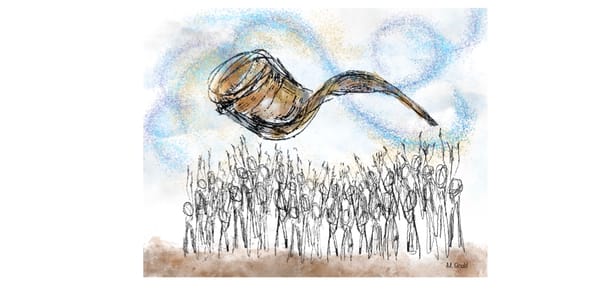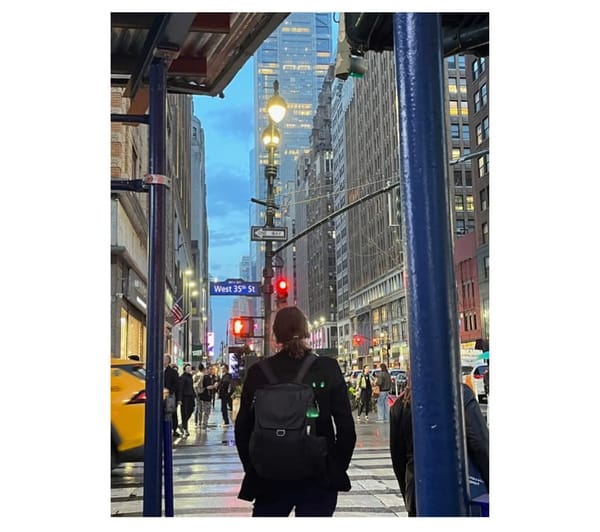Culinary Time Travel: Easy, Cheesy Sambusak
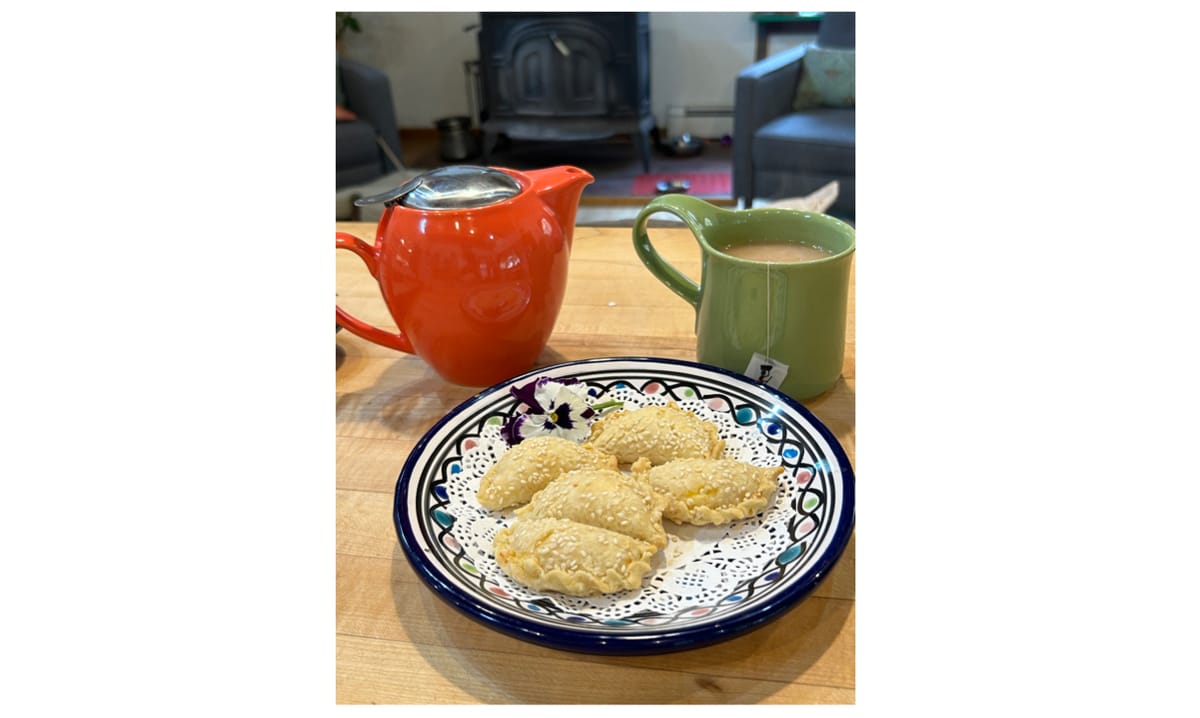
by Claudette Sutton
photos by Charles Brunn
On a rainy day in September, on the steps of the federal courthouse in downtown Santa Fe, our son Ariel married the woman of his dreams.
Mind you, this is the same boy who announced one night at three years old when I was tucking him into bed: “I’m going to live with you and Daddy forever!” Charles and I didn’t make him commit to that in writing. We had a hint that his feelings might change in the ensuing decades. Plus, he didn’t know all the letters of his name yet.
I told that story to family and friends at the rehearsal dinner the night before the wedding. By then Ariel had lived or studied in five countries, Lacee had traveled and worked in several others, and the caprices of fate led them to meet and fall in love here in Santa Fe. Ariel’s preschool pledge had long since drifted into the realm of cute anecdote. As we raised our glasses, I told our guests that what I was witnessing that weekend – my son starting a life with someone he adores, who adores him, in the company of adoring friends and family – was exactly what I wished for him when he was three years old.
I was lying, of course, but only a teeny bit. If I could travel back in time to those days as a young mom with a precious little boy I tucked into bed at night and kissed on both cheeks (not just one, or the other will get jealous), I’d be tempted. But I can’t. What I can do is revel in his joy in finding a partner with whom to create a loving home of their own, merging their respective pets, stories, wishes, traditions, rituals, dreams, and foods.
Which is why I was delighted when my delightful daughter-in-law asked for a family recipe or two for a “recipe wall” she plans to create in their kitchen, combining favorites from parents and grandparents on both sides of their families. Between us, we represent East Coast, Texan, Southern, Cajun, French, Anglo-Saxon, and Middle Eastern heritage – a culinary and genetic buffet.
My only problem is deciding what to include. Grandma’s roast chicken and eggplant, a favorite in our household on Friday night dinners and holidays? Or Mom’s Walnut Fudgies – brownies with a gooey center, which have the added value of coming in Mom’s handwriting and custom spelling (“wallnut,” “chocolet,” etc.).
Space permitting (I always want more!), I’ll provide both – along with my childhood and present-day favorite: cheese sambusak. These are palm-sized, savory, cheese-filled pastries, baked in a buttery dough, topped with sesame seeds. As a kid, I was an epically picky eater. Family lore (not far from the truth) has it that I ate only five foods, and sambusak was one of them. (Bacon was another; ours was not a kosher household.) To this day I try to keep a bag of sambusak in the freezer so I can bake a few for solace on a hard day or a treat on a good one.
Like many Sephardic foods served during maza preceding a meal, these are labor-intensive but well worth the time, and they freeze well.
So let’s get started.
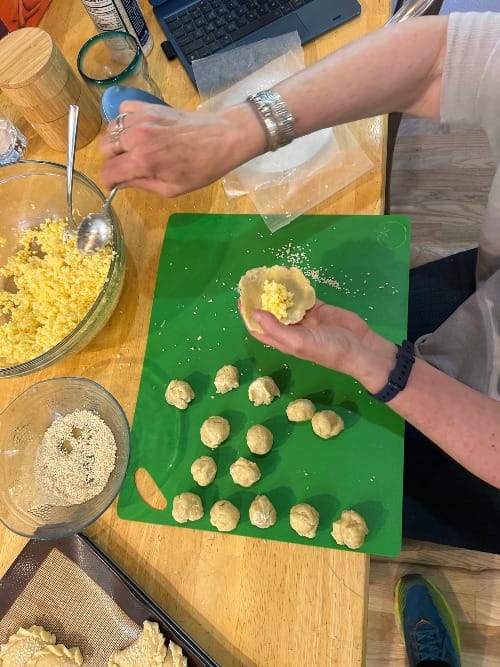
In a large bowl, food processor, or mixer, combine 2½ cups white flour, ½ cup semolina, a pinch of salt, and 2 sticks of melted, beaten butter. Mix well. Slowly add up to ½ cup warm water and 1 teaspoon of oil. Dough should be moist and soft, but not sticky.
Refrigerate for 20 minutes.
In a medium bowl, mix 2 beaten eggs and 1 pound of grated cheese. Muenster is traditional here, but you can substitute sharp cheddar or parmesan for a little zing.
In a saucer or small bowl, pour in about 2 tablespoons of untoasted sesame seeds.
Divide the dough into thirds. Work with one third at a time, covering the rest with a dish towel to keep the dough from drying out. Break each third into 20-25 walnut-sized pieces, then roll each piece into a ball.
Dip each ball of dough into the sesame seeds, then flatten it into a circle about 3” in diameter. Grandma used to cup each ball in the palm of one hand and press it thin and flat with the thumb of her other hand, but she picked up speed with decades of experience. For a shortcut, I flatten the ball with a tortilla press, then press it a little thinner in my palm. Other people use a rolling pin or the base of a large jar.
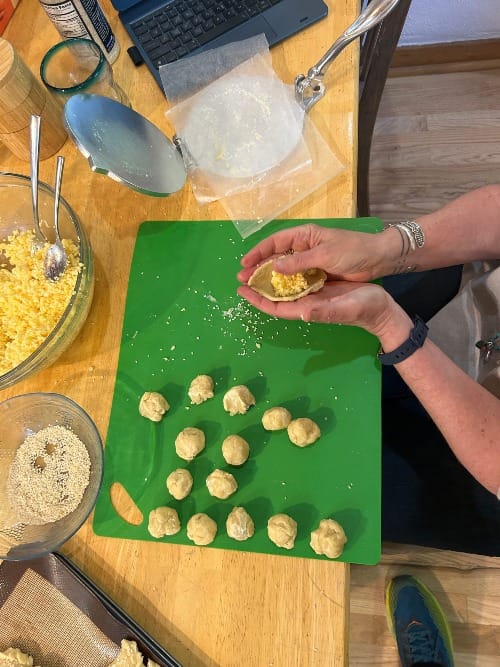
Next, put about 1 teaspoon of the cheese and egg mixture in the center of your dough, with the sesame seeds on the outside.
Fold the dough into a half moon, then press the edges together with your fingertips. Don’t overfill; the filling will expand a bit while cooking.
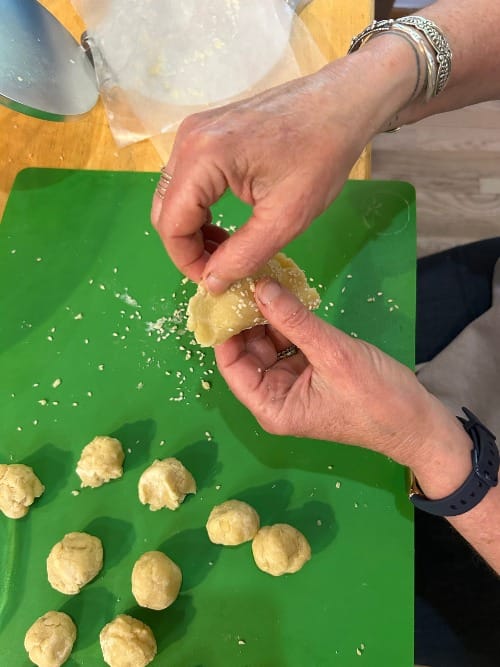
Now, for a special flourish, crimp the edge. Hold the filled sambusak in one hand, while you pinch the top of the half moon with the thumb and forefinger of your other hand and fold it towards you like you’re dog-earing the page of a book. Repeat pinching and folding about 6 or 8 times as you make your way down the curve. With practice, you’ll produce a lovely, scalloped edge. Keyword here is practice.
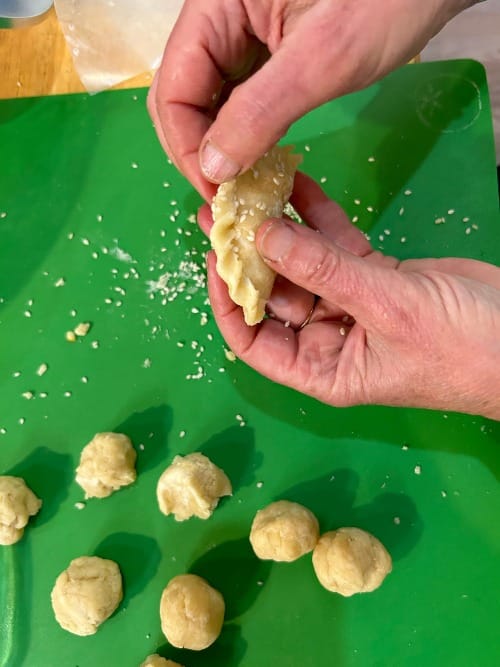
Congratulate yourself! Place your completed sambusak on a parchment-lined baking sheet and line up the rest as you go. Freeze on the baking sheet for a few hours so they hold their shape, then store in a freezer-safe bag.
To cook now: Bake at 350 degrees on an ungreased baking sheet for about 15 minutes, until golden brown. Best not to overbake, so the dough keeps its soft, buttery texture.
To cook after freezing: Bake straight from the freezer for about 20 minutes at 400 degrees. Serve hot or at room temperature.
Culinary historians tell us that sambusaks have been eaten since Babylonian times, and that they are the antecedents of samosas, empanadas, calzones, and bourekas. Variations of fillings abound across the Middle East: spinach, ground lamb, chicken, seasoned chickpeas or lentils, mushrooms, potatoes, and other kinds of cheese. Grandma also made them with ground beef sauteed with onion and allspice.
Will my someday-grandchildren make sambusaks and pass the recipe down to their children? Who knows. I may not be around to see, but I trust food to be a magical vehicle for time travel and imagination, bringing the past to life and guiding us into the future. You may find sambusak to be a comfort in your own household even if you don’t have memories tagging along with them. Dig in.
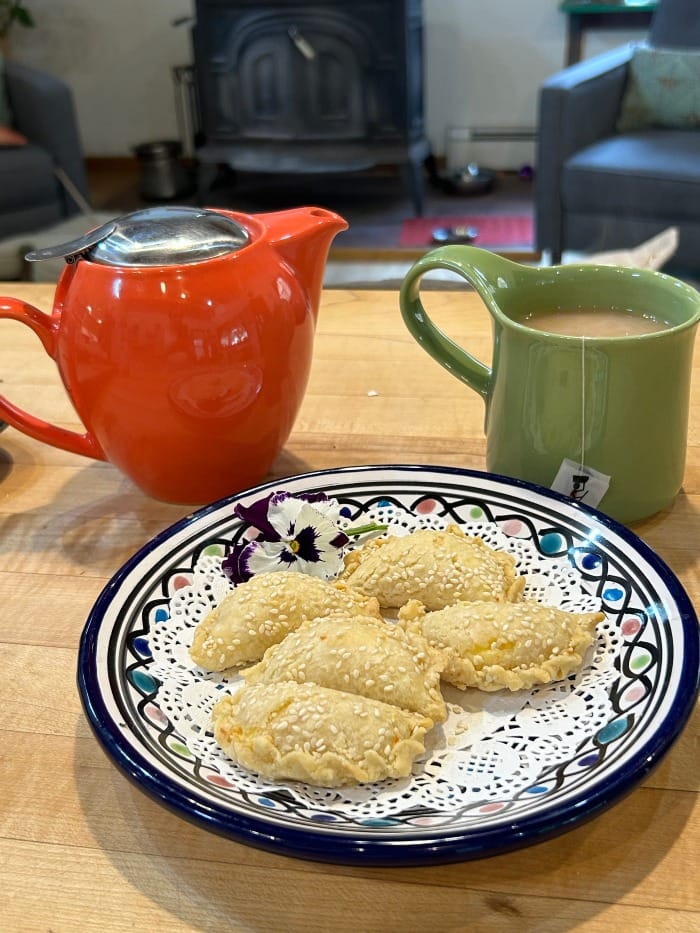
To see more articles click here, or the HOME button at the top.
Community Supporters of the NM Jewish Journal include these advertisers:
Jewish Community Foundation of New Mexico
Congregation Albert
Jewish Community Center of Greater Albuquerque
The Institute for Tolerance Studies
Shabbat with Friends: Recapturing Together the Joy of Shabbat
Congregation B'nai Israel
Jewish Federation of El Paso and Las Cruces
Temple Beth Shalom
Single Event Announcement advertisers:
Academy of Jewish Learning at Congregation B'nai Israel
New Mexico Jewish Historical Society
Policy Statement Acceptance of advertisements does not constitute an endorsement of the advertisers’ products, services or opinions. Likewise, while an advertiser or community supporter's ad may indicate their support for the publication's mission, that does not constitute their endorsement of the publication's content.
Copyright © 2024-2025 New Mexico Jewish Journal LLC. All rights reserved.

